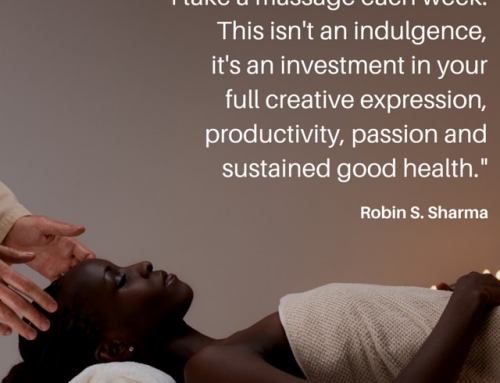As I approach two decades in my career there is one thing that I am proud to have valued since my entry level training in massage school: it is the client’s body and they have the ultimate say on how they get treated. How do we communicate our expertise in a language that makes sense to the client so they are fully informed and not overwhelmed? It is easy to talk with the buzz words, defaulting to modality names or the type of tissue we treat.
Reflecting on this concept in my own training: I have a certification in neuromuscular therapy. If we look at that word, we are talking about working with nerves and muscle. Well, what technique doesn’t work with nerves and muscle? And what about the other major tissue types? Are the other tissues not effected simply because my intention is not there? No way. I worked for a company that had “Connective Tissue Massage” on their menu and I wondered what the training for that consisted of and why it cost more to receive than other modalities on the menu. How are they able to isolate? My experience studying cadavers shows me that it takes multiple scalpel blades to accomplish this isolation and that the integration of connective tissue throughout the body begs to never be isolated. This got me thinking of a very basic question: Why does nobody call themselves an Epithelial Tissue Massage Therapist? For sure we can’t glaze over its importance. Yet pigeonholing ourselves by the tissue we treat is a far cry from what we do, no matter what you call it.
Modality names limit everybody’s choices and communication. “Sports massage” is a favorite example I like to use. I have worked with Big10 collegiate athletes, many of whom had hamstring strain from sprinting across the field. I have also had quite a few new parents who sprint across their yard to save their toddler from eating rocks and strained their hamstring. Am I going to use a different “modality” because they weren’t playing football or softball? Hint: the answer is no.
I have been often asked by students if I charge more for certain modalities. I find myself at a loss for words with this question because I use a variety of techniques that flow into each other – all of them having elements of our basic strokes that we learned day 3 of massage school before we even knew anything. If we were to itemize the list of modalities it would be so painstakingly hard to keep track of how much time we are spending with which particular technique, paying attention to the clock and not the change happening under my hands, well this just seems so unbelievably the opposite of being client centered. “I did 5 minutes of myofascial warm up (again, just muscle and fascia? Probably not), 15 minutes of trigger point therapy, 30 minutes of “Swedish’ techniques (should those techniques be broken down too?)…” As you can see doing it this way focuses on what we do, not the potential measurable change for the client. I had a colleague in the past who charged more for a “Swedish“ massage because it was more stress on their, the therapist’s, body. Again, not client centered. And, that leaves the client paying potentially for the lack of the therapist’s personal and professional responsibility.
Listen, I am not immune from falling into these verbal habits. When fatigue sets in, sometimes it’s just easier to use this common language. Here’s the problem: modalities are not about the client. When we use modality names, we talk about what we are going to do to them. This leaves a wide-open opportunity for ego. Much more importantly, this increases the gap in the power differential resulting in a more stressful environment making it more and more difficult to achieve the parasympathetic response.
So it’s our responsibility as license practitioners to be able to give the most accurate information that we have access to. “When the client has the correct information, they will make the right choice for themselves 100% of the time.” –Alan Stern DDS, member of the American Academy of Oral Systemic Heath, author of Enjoy the Ride, and motivational speaker.
I’ve said for quite some time that the names of modalities are simply marketing terms (see “Why I Hate the Phrase Deep Tissue Massage”). I am excited to see some passionate conversation around the use of modality names in our profession. Let’s keep going! If we’re so impassioned about this perhaps the next logical step is to talk outcomes. What does your client hope to achieve by the end of the session? Pain reduction? Stress reduction? What tools do we have to meet this outcome? Are you sure?
Maybe it would be best to ask these questions: What happens when we compress tissue? Lift it? Glide over it? Torque it? Elongate it? Friction it? Percuss it? We’ll explore this over the next few months.
Until then, pay attention to the desired outcome – it’s far greater than just what the client wants to achieve an hour from now. How can we help them get there?





